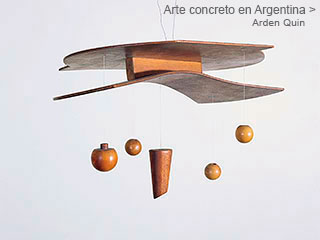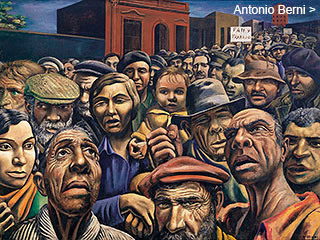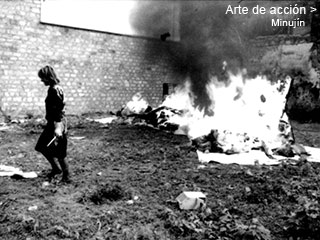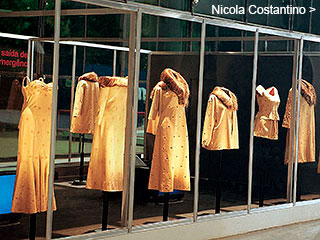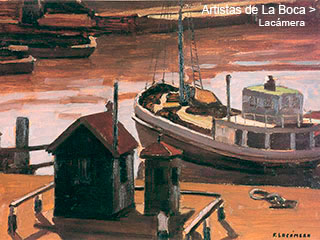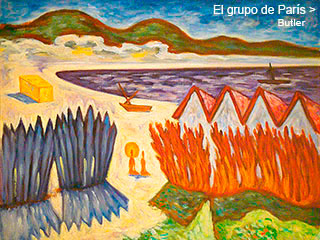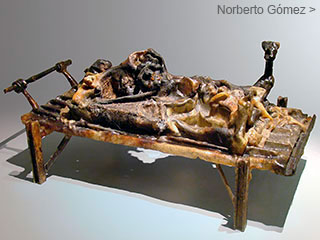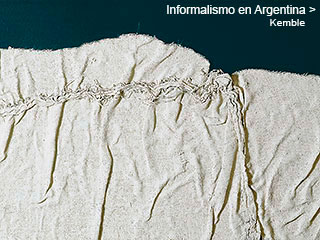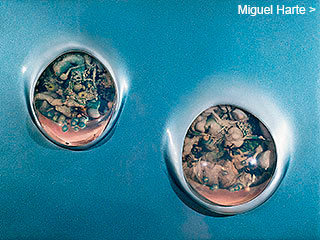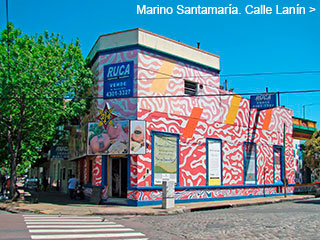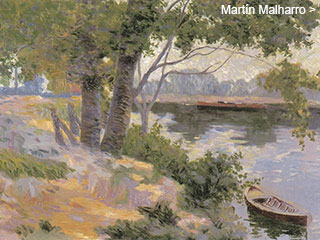Menú
Algunos dossiers
Concrete Art
in Argentina
in Argentina
by
Adriana Lauria
January 2003
January 2003
Abstraction asserted itself in Argentina through the achievements of groups such as Arte Concreto-Invención, Madí and Perceptismo, which developed their activity since the second half of the 1940s. These groups constituted the first organized national avant-garde and made their aesthetics known to the public through exhibitions, magazines, manifestoes, leaflets, lectures, etc.
Documents
J. Torres García
Joaquín Torres García. “The ‘Abstract’ and the ‘Concrete’”, in Universalismo constructivo. Contribución a la unificación del arte y la cultura de América. Buenos Aires, Poseidón, 1944, pp. 270-272.
Although somewhere in this book it will be precisely said what we understand for ‘Abstract’ and ‘Concrete’, before further advance, and considering the intense use given to those terms, it is appropriate to agree about the special meaning they are intended to assume here, in order to avoid any possible misunderstanding. For, paradoxical as it may seem, being them apparently antagonistic, the way they are used here provides them with a unique connotation.
If we stick to the customary use of those two words, we see they designate sharply opposite terms: the concept (the abstract) and the real thing (the concrete); what is abstracted from the object, excluding it, and the object itself, considered as a real, existing thing. Thus, when we mention the abstract, we mean something that exists only ideally, and when we mention the concrete, we mean something material in the space. However, rather, ‘abstract’ will refer to the quality of an object, while the ‘concrete’ to that quality associated to the object itself, all of this apart from other meanings.
Well then, we call here ‘abstract’ what has been abstracted from reality, with the exclusion of this one, and in the way the term must be properly used; but inasmuch for the plastic artist that abstraction might suppose to concrete anything concerning reality, and even with respect to the plastic substance he would use to express himself, both terms end up in one, and therefore they would mean, symbolically, the perfect union of the idea and the matter, which is what we have denominated plastics deed. For us, the concrete is abstract, and vice versa. For such reason both terms are used indistinctly. But there will be times, and the reader is probably aware of that already, in which we will say “The abstract is the course to follow”; we imply then not only the plastics deed, but any other attitude external to art. For instance, we will say “we shall rule our behavior through abstract laws”, with which me mean we will behave according to the universal law of reason and not to what our own personal concern advises us. It is said through this that the universal and not the particular is the course to take, and that, consequently, there exists a world of abstractions in which we want to be. And in this case, the concrete would be the real world, and here the word real has a different meaning.
About the same issue, another significant point should be made clear: modernly, every non-figurative art has been called ‘abstract art’. We do not deem such a distinction suitable. Be it figurative or not, every art, the way we consider it, is abstract. The reason for that is as follows: we do not consider to be art but the one based on a synthetism; that is to say, an art made and conceived within a vision of abstract elements –with exclusion of reality–, achieved through plastic elements, also considered in themselves. Namely, that the formal and color elements used here are already and completely detached from any object, and, on the other hand, the plastic matter engaged already operates independently and with no grip from nature, for, within the work, the elements only intend to perform their own expression. Because of that, even when such an art were a figurative one, it is abstract art, and the naturalist imitative art, always seized to the real object, will never be nor synthetic neither abstract. Therefore it is a senseless art, and it remains at the lowest echelon of the scale.


